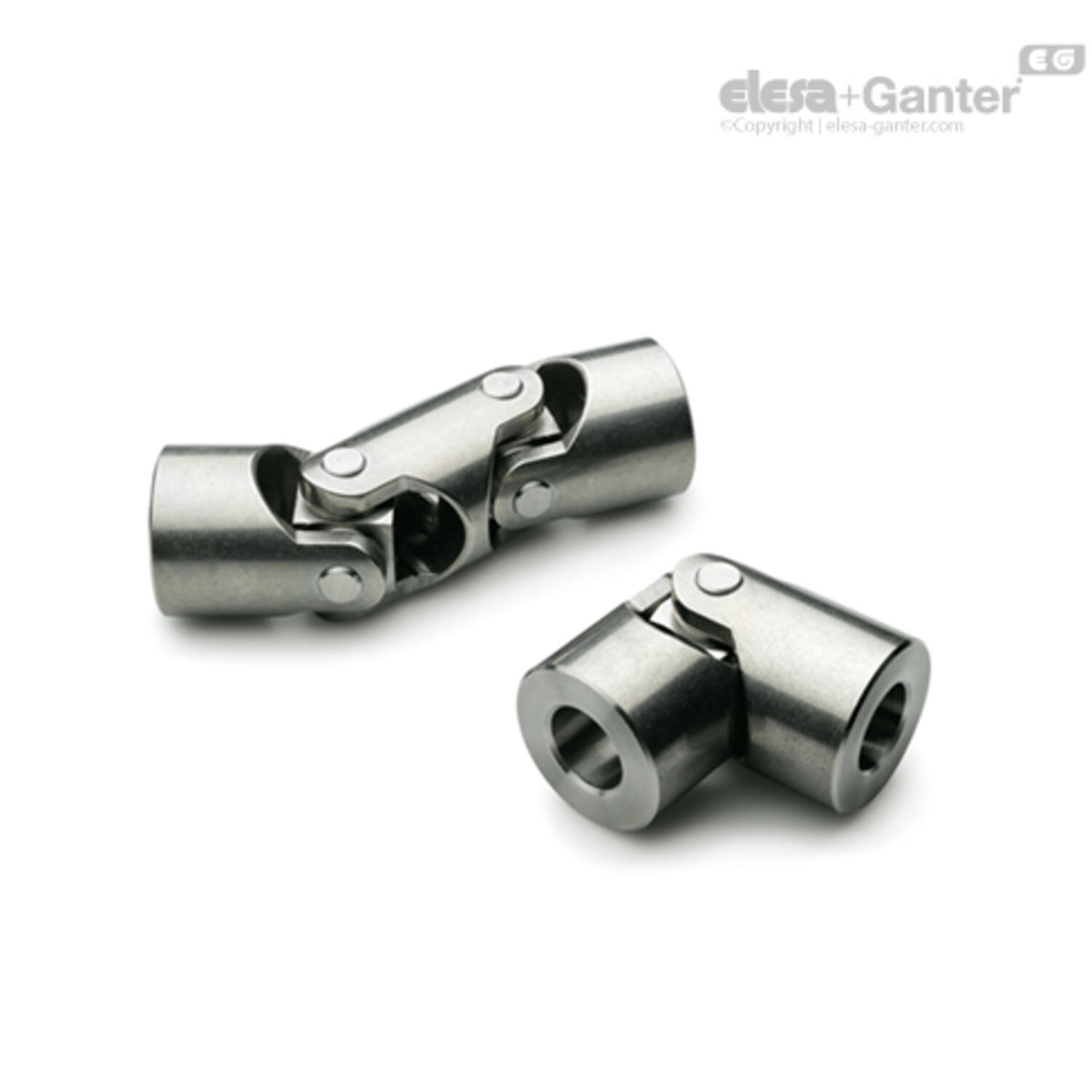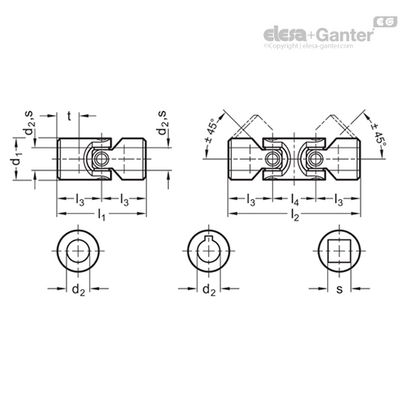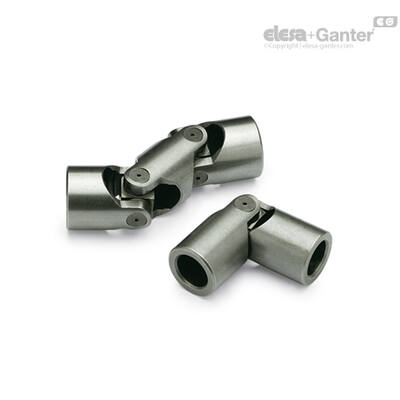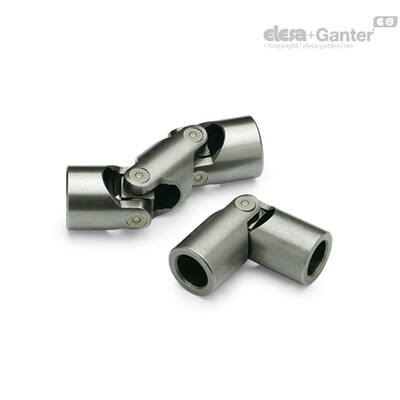DIN 808
Kruiskoppelingen, Verbindingen
DIN 808
Kruiskoppelingen, Verbindingen
Opmerking: prijzen voor alle typen met V = vierkant gat zijn alleen op aanvraag beschikbaar.
Omschrijving
1SpecificatieUniversele verbindingen met glijlager
Uitvoering in staal
Typen
- Type EG: enkel, glijlager
- Type DG: dubbel, glijlager
Boringcodes
- Versie B: zonder spiebaan
- Versie K: met spiebaan
- Versie V: met vierkant
Staal
blank
Koppelingslagergebieden / pennen / lagerbussen
inzetgehard
Uitvoering in roestvast staal
Typen
- Type EG: enkel, glijlager
- Type DG: dubbel, glijlager
Boringcode
- Versie B: zonder spiebaan
- Versie K: met spiebaan
- Versie V: met vierkant
Roestvrij staal AISI 304 NI
Universele verbindingen met naaldlager
Typen
- Type EW: enkel, naaldlager
- Type DW: dubbel, naaldlager
Boringcodes
- Versie B: zonder spiebaan
- Versie K: met spiebaan
- Versie V: met vierkant
Staal
blank
Koppelingslagergebieden, pennen
inzetgehard
]]>2Informatie
Het toelaatbare toerental van de universele verbindingen met glijlager DIN 808 is in grote mate afhankelijk van het soort toepassing, zoals belasting, duur, hoekverdeling en smering. Bij meer dan 1000 omwentelingen per minuut moeten universele verbindingen met naaldlager worden gebruikt.
Voor continu gebruik is een ruime smering noodzakelijk. Dit wordt bereikt door de koppeling te voorzien van een met vet gevulde beschermbalg GN 808,1
]]>3Op aanvraag
- met andere of ongelijke boringen
- ]]>4Technische informatieToelaatbaar tpm en draaimoment
- Spiebaan DIN 6885
- Kruisgaten GN 110,1
De enkele universele verbindingen brengen de eerste gelijkmatige rotatie over als een onregelmatige rotatie. Een omwenteling van de aandrijfas via een enkele universele verbinding zorgt ervoor dat de aangedreven as twee keer versnelt en vertraagt. De omvang van de onregelmatigheid is afhankelijk van de werkhoek ß.
Om een gelijkmatige rotatie van de aangedreven as te verkrijgen, zijn twee enkele of één dubbele universele verbinding nodig. In die gevallen waar kleine onregelmatigheden in de beweging aanvaardbaar zijn of waar kleine bedieningshoeken de norm zijn, volstaat een enkele universele verbinding.
Voor een gelijkmatige overdracht van een draaisnelheid moet de hellingshoek ß aan beide uiteinden van de verbindingsas gelijk zijn.
Door een verkeerde aansluiting van de universele verbindingsassen wordt de onregelmatige rotatie van elke koppeling niet gecompenseerd, maar versterkt. Hierdoor kunnen gewrichtslagers en wigprofielen beschadigd raken. Daarom moeten de markeringen van de helften van de universele verbindingsas tegenover elkaar liggen.
Bovendien moeten de lagers zo dicht mogelijk bij de universele verbindingen liggen.
Voor een continue werking van universele verbindingen met glijlagers is een adequate smering van essentieel belang. Als druppelsmering niet mogelijk is, moeten ze minstens eenmaal per dag worden gesmeerd. Het is ook mogelijk om de universele verbinding te voorzien van een beschermbalg GN 808.1 die gevuld kan worden met olie of vet.
]]>6Universele verbindingen met glijlager, Type EGDe tabel toont de overdraagbare output N en/of draaimomenten M van de universele verbindingen DIN 808, type EG (enkel glijlager) in relatie tot
De waarden zijn alleen van toepassing op een constante rotatiesnelheid, constante belasting en een werkhellingshoek van max. 10°. Ze zijn niet van toepassing op universele verbindingen in roestvrij staal.
Voor grotere hellingshoeken ß moet een nominaal vermogen N, verhoogd met de correctiecoëfficiënt k en/of een nominaal draaimoment M worden gekozen (zie onderstaand voorbeeld).
Conversieformule:
Draaimoment M [Nm] = 9550 N[kW]/n [min-1]
Vermogen N [kW] = M [nm] x n [min-1]
1 kW = 1.36 PS / 1 PS = 0.736 kW
Voorbeeld 1
T.p.m. n = 230 min-1
Hellingshoek ß = 10°
Correctiecoëfficiënt k = 1
Indicatief vermogen N'= nominaal vermogen N
De volgende grotere universele verbinding die overeenkomt met punt P is het model met een diameter d1 = 25.
Voorbeeld 2
Over te dragen draaimoment M = 27 Nm
T.p.m. n = 230 min-1
Hellingshoek ß = 30°
De volgende grotere universele verbinding die overeenkomt met P1 is het model met een diameter d1 = 36.
De tabel toont de overdraagbare output N en/of draaimomenten M van de universele verbindingen DIN 808
Voor grotere hellingshoeken ß moet een nominaal vermogen N, verhoogd met de correctiecoëfficiënt k en/of een nominaal draaimoment M worden gekozen (zie onderstaand voorbeeld).
Conversieformule:
Draaimoment M [Nm] = 9550 N[kW]/n [min-1]
Vermogen N [kW] = M [nm] x n [min-1]
1 kW = 1.36 PS / 1 PS = 0.736 kW
Voorbeeld 1
Hellingshoek ß = 10°
Correctiecoëfficiënt k = 1
Indicatief vermogen N'= nominaal vermogen N
Voorbeeld 2
]]>
Scroll onderstaande tabel om meer te zien
Code |
Product omschrijving |
Aantal |
Prijs |
Bestel |
CAD |
l1 |
l3 |
Gewicht (g) |
d2 H7 |
s H10 |
d1 |
l4 |
t+1 max montagelengte van de schacht |
l2 |
|---|---|---|---|---|---|---|---|---|---|---|---|---|---|---|
| Filter |
|
|
|
|
|
|
|
|
|
|||||
| 161611405 | DIN 808-16-B6-34-EG-NI |
|
34 | 17 | 40 | 6 | N.v.t. | 16 | N.v.t. | 8 | N.v.t. | |||
| 161611415 | DIN 808-16-B6-56-DG-NI |
|
N.v.t. | 17 | 60 | 6 | N.v.t. | 16 | 22 | 8 | 56 | |||
| 161611420 | DIN 808-16-B8-40-EG-NI |
|
40 | 20 | 33 | 8 | N.v.t. | 16 | N.v.t. | 11 | N.v.t. | |||
| 161611060 | DIN 808-16-B8-62-DG-NI |
|
N.v.t. | 20 | 65 | 8 | N.v.t. | 16 | 22 | 11 | 62 | |||
| 161611440 | DIN 808-16-K6-34-EG-NI |
|
34 | 17 | 38 | 6 | N.v.t. | 16 | N.v.t. | 8 | N.v.t. | |||
| 470004306 | DIN 808-16-K6-56-DG-NI |
|
N.v.t. | 17 | 65 | 6 | N.v.t. | 16 | 22 | 8 | 56 | |||
| 161611450 | DIN 808-16-K8-40-EG-NI |
|
40 | 20 | 40 | 8 | N.v.t. | 16 | N.v.t. | 11 | N.v.t. | |||
| 161611061 | DIN 808-16-K8-62-DG-NI |
|
N.v.t. | 20 | 65 | 8 | N.v.t. | 16 | 22 | 11 | 62 | |||
| 161611451 | DIN 808-16-V6-34-EG-NI |
|
34 | 17 | 40 | N.v.t. | V 6* | 16 | N.v.t. | 8 | N.v.t. | |||
| 470004320 | DIN 808-16-V6-56-DG-NI |
|
N.v.t. | 17 | 60 | N.v.t. | V 6* | 16 | 22 | 8 | 56 | |||
| 470004321 | DIN 808-16-V8-40-EG-NI |
|
40 | 20 | 40 | N.v.t. | V 8* | 16 | N.v.t. | 11 | N.v.t. | |||
| 470004322 | DIN 808-16-V8-62-DG-NI |
|
N.v.t. | 20 | 64 | N.v.t. | V 8* | 16 | 22 | 11 | 62 | |||
| 161610147 | DIN 808-22-B10-48-EG-NI |
|
48 | 24 | 100 | 10 | N.v.t. | 22 | N.v.t. | 12 | N.v.t. | |||
| 161611455 | DIN 808-22-B10-74-DG-NI |
|
N.v.t. | 24 | 150 | 10 | N.v.t. | 22 | 26 | 12 | 74 | |||
| 161610135 | DIN 808-22-K10-48-EG-NI |
|
48 | 24 | 97 | 10 | N.v.t. | 22 | N.v.t. | 12 | N.v.t. | |||
| 161611487 | DIN 808-22-K10-74-DG-NI |
|
N.v.t. | 24 | 144 | 10 | N.v.t. | 22 | 26 | 12 | 74 | |||
| 470004323 | DIN 808-22-V10-48-EG-NI |
|
48 | 24 | 90 | N.v.t. | V 10* | 22 | N.v.t. | 12 | N.v.t. | |||
| 470004324 | DIN 808-22-V10-74-DG-NI |
|
N.v.t. | 24 | 145 | N.v.t. | V 10* | 22 | 26 | 12 | 74 | |||
| 161610185 | DIN 808-25-B12-56-EG-NI |
|
56 | 28 | 50 | 12 | N.v.t. | 25 | N.v.t. | 13 | N.v.t. | |||
| 161611520 | DIN 808-25-B12-86-DG-NI |
|
N.v.t. | 28 | 225 | 12 | N.v.t. | 25 | 30 | 13 | 86 | |||
| 161611545 | DIN 808-25-K12-56-EG-NI |
|
56 | 28 | 146 | 12 | N.v.t. | 25 | N.v.t. | 13 | N.v.t. | |||
| 161611541 | DIN 808-25-K12-86-DG-NI |
|
N.v.t. | 28 | 219 | 12 | N.v.t. | 25 | 30 | 13 | 86 | |||
| 470004325 | DIN 808-25-V12-56-EG-NI |
|
56 | 28 | 140 | N.v.t. | V 12* | 25 | N.v.t. | 13 | N.v.t. | |||
| 470004326 | DIN 808-25-V12-86-DG-NI |
|
N.v.t. | 28 | 219 | N.v.t. | V 12* | 25 | 30 | 13 | 86 | |||
| 161611103 | DIN 808-32-B16-105-DG-NI |
|
N.v.t. | 34 | 435 | 16 | N.v.t. | 32 | 37 | 16 | 105 | |||
| 161610170 | DIN 808-32-B16-68-EG-NI |
|
68 | 34 | 290 | 16 | N.v.t. | 32 | N.v.t. | 16 | N.v.t. | |||
| 470004314 | DIN 808-32-K16-105-DG-NI |
|
N.v.t. | 34 | 427 | 16 | N.v.t. | 32 | 37 | 16 | 105 | |||
| 161611645 | DIN 808-32-K16-68-EG-NI |
|
68 | 34 | 289 | 16 | N.v.t. | 32 | N.v.t. | 16 | N.v.t. | |||
| 470004328 | DIN 808-32-V16-105-DG-NI |
|
N.v.t. | 34 | 427 | N.v.t. | V 16* | 32 | 37 | 16 | 105 | |||
| 470004327 | DIN 808-32-V16-68-EG-NI |
|
68 | 34 | 274 | N.v.t. | V 16* | 32 | N.v.t. | 16 | N.v.t. | |||
| 161611700 | DIN 808-42-B20-128-DG-NI |
|
N.v.t. | 41 | 919 | 20 | N.v.t. | 42 | 46 | 18 | 128 | |||
| 161610214 | DIN 808-42-B20-82-EG-NI |
|
82 | 41 | 600 | 20 | N.v.t. | 42 | N.v.t. | 18 | N.v.t. | |||
| 100713810 | DIN 808-42-K20-128-DG-NI |
|
N.v.t. | 41 | 900 | 20 | N.v.t. | 42 | 46 | 18 | 128 | |||
| 161611740 | DIN 808-42-K20-82-EG-NI |
|
82 | 41 | 600 | 20 | N.v.t. | 42 | N.v.t. | 18 | N.v.t. | |||
| 470004330 | DIN 808-42-V20-128-DG-NI |
|
N.v.t. | 41 | 886 | N.v.t. | V 20* | 42 | 46 | 18 | 128 | |||
| 470004329 | DIN 808-42-V20-82-EG-NI |
|
82 | 41 | 570 | N.v.t. | V 20* | 42 | N.v.t. | 18 | N.v.t. | |||
| 161611800 | DIN 808-50-B25-108-EG-NI |
|
108 | 54 | 1130 | 25 | N.v.t. | 50 | N.v.t. | 26 | N.v.t. | |||
| 161611815 | DIN 808-50-B25-163-DG-NI |
|
N.v.t. | 54 | 1620 | 25 | N.v.t. | 50 | 55 | 26 | 163 | |||
| 161611850 | DIN 808-50-K25-108-EG-NI |
|
108 | 54 | 1098 | 25 | N.v.t. | 50 | N.v.t. | 26 | N.v.t. | |||
| 161610271 | DIN 808-50-K25-163-DG-NI |
|
N.v.t. | 54 | 1628 | 25 | N.v.t. | 50 | 55 | 26 | 163 | |||
| 470004331 | DIN 808-50-V25-108-EG-NI |
|
108 | 54 | 1065 | N.v.t. | V 25* | 50 | N.v.t. | 26 | N.v.t. | |||
| 470004332 | DIN 808-50-V25-163-DG-NI |
|
N.v.t. | 54 | 1585 | N.v.t. | V 25* | 50 | 55 | 26 | 163 | |||
 Handwielen, handslingers
Handwielen, handslingers
 Knoppen, vleugelmoeren
Knoppen, vleugelmoeren
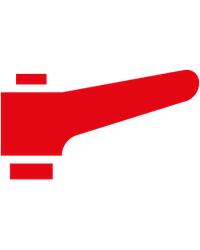 Klemhendels, verstelbare handgrepen
Klemhendels, verstelbare handgrepen
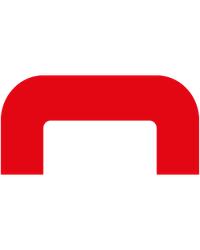 Beugelgrepen, handgrepen
Beugelgrepen, handgrepen
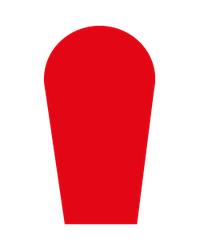 Vaste, draaiende handgrepen
Vaste, draaiende handgrepen
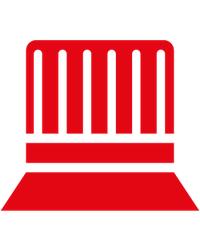 Bedieningselementen
Bedieningselementen
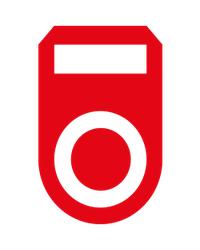 Indicatoren, klokhandwielen
Indicatoren, klokhandwielen
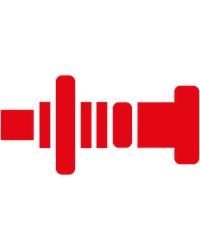 Blokkeerbouten, drukstukken
Blokkeerbouten, drukstukken
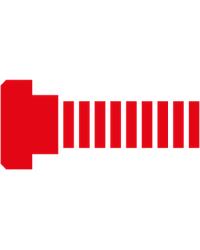 Machine elementen
Machine elementen
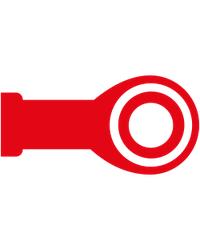 Koppelingen
Koppelingen
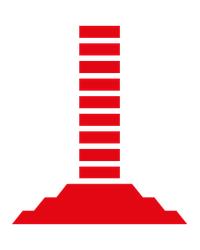 Stelvoeten, stelelementen
Stelvoeten, stelelementen
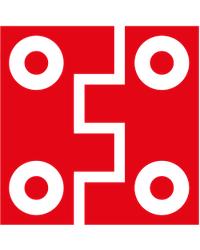 Scharnieren
Scharnieren
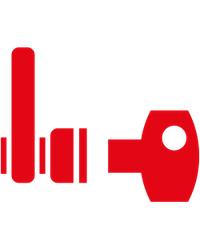 Vergrendelingen, deursluitingen
Vergrendelingen, deursluitingen
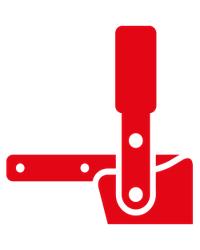 Snelspanners, spansluitingen
Snelspanners, spansluitingen
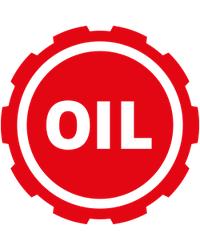 Hydrauliek componenten
Hydrauliek componenten
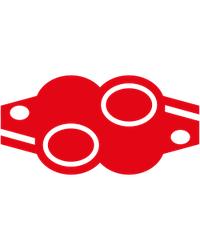 Buisklemverbindingen
Buisklemverbindingen
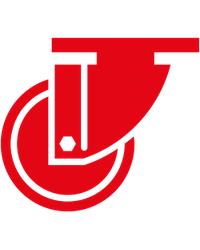 Wielen en zwenkwielen
Wielen en zwenkwielen
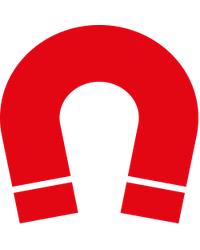 Magneten
Magneten
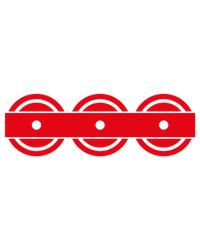 Transportband componenten
Transportband componenten
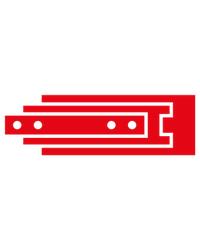 Lineaire bewegingscomponenten
Lineaire bewegingscomponenten
 Trillingdempers
Trillingdempers
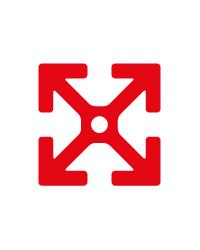 Aluminium profielen
Aluminium profielen
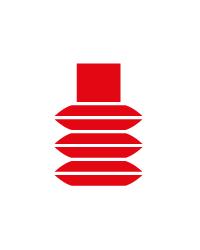 Vacuümcomponenten
Vacuümcomponenten
